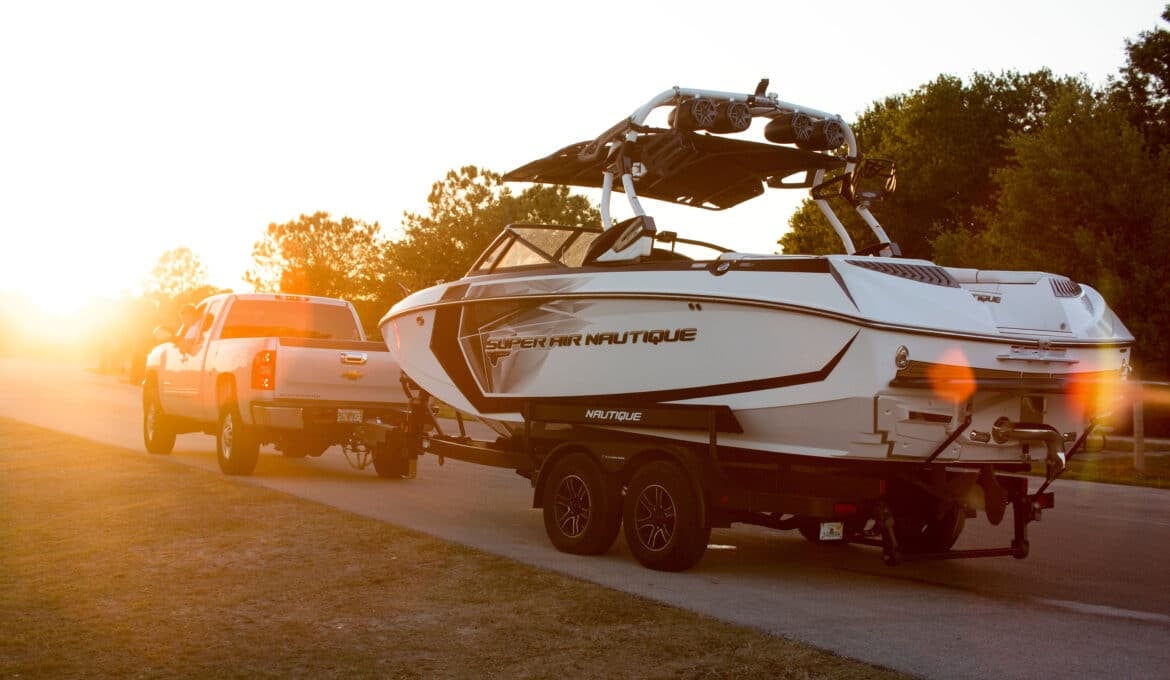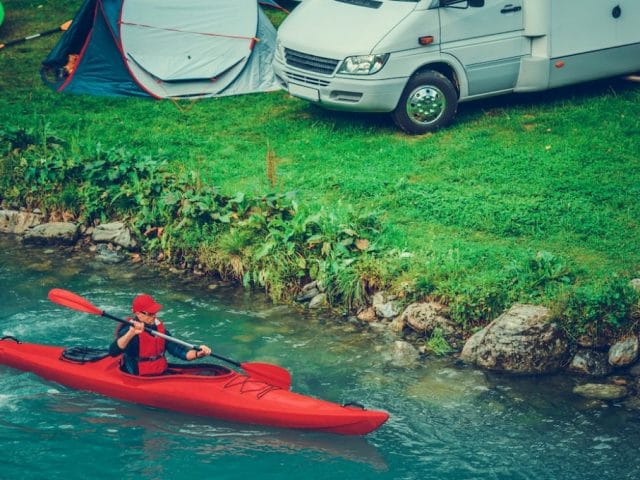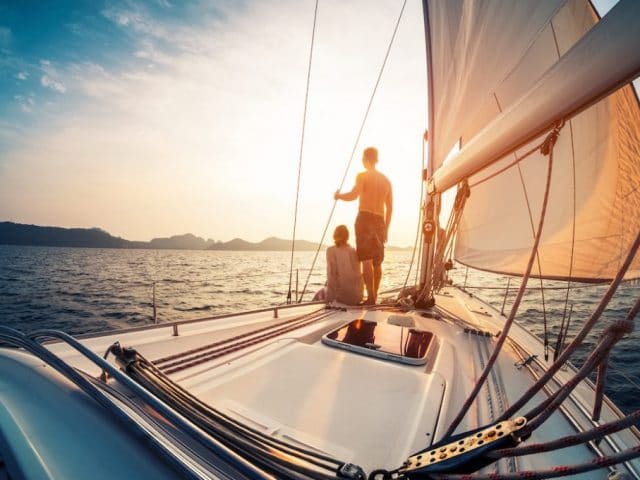It’s easy to picture yourself out on the water enjoying your favorite watersports activities like tubing, skiing, fishing, or just relaxing, but it takes some effort to get to that point. An often overlooked part of boating is getting your boat from home to the water. This article is here to help answer questions you may have about towing a boat trailer.
Towing Capacity
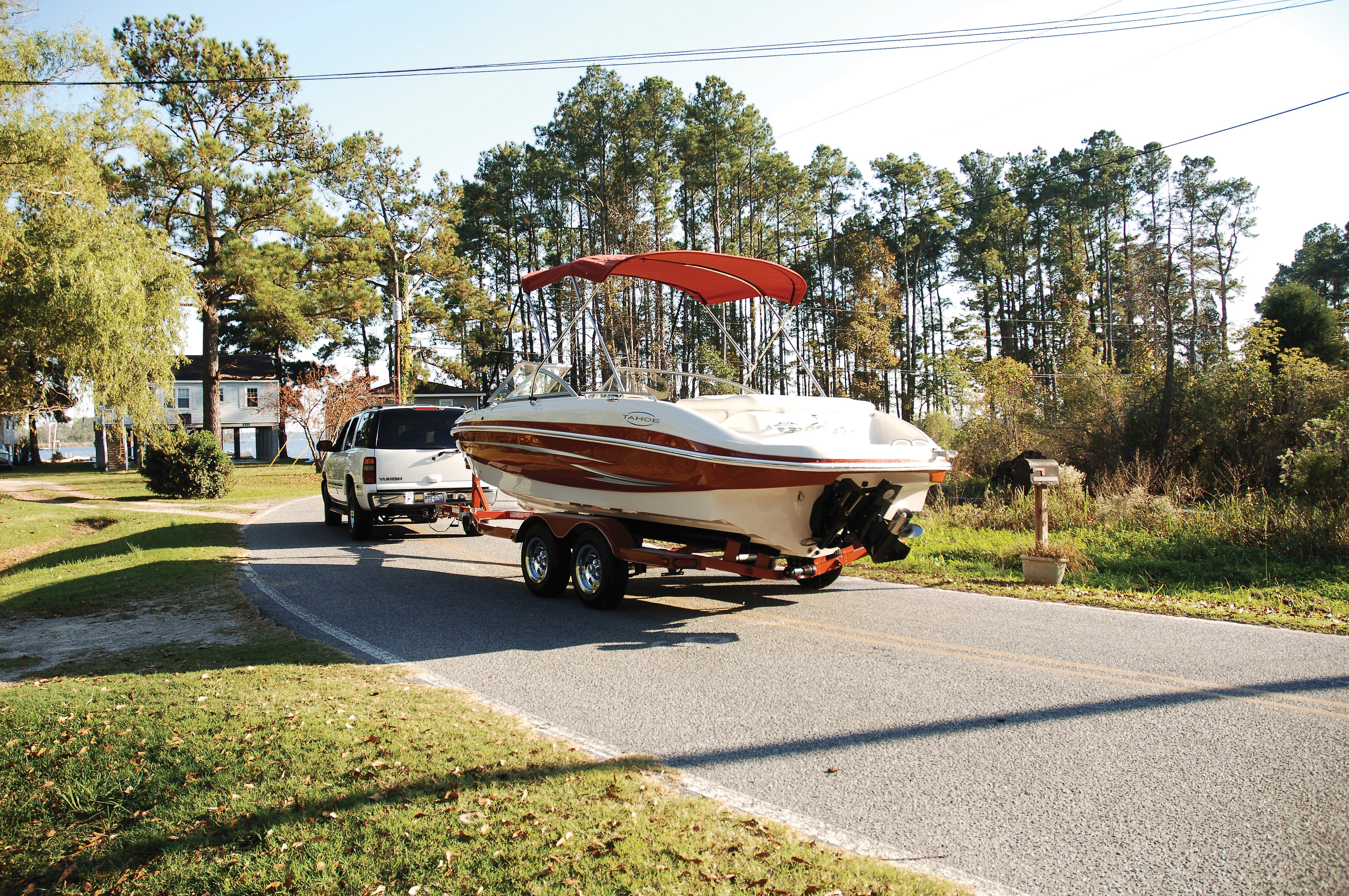
The last thing you want when towing a boat trailer is to be out on the highway and have your trailer and the very expensive boat you just bought start doing a dance behind you or slide backward helplessly down a boat ramp with no control. These are not calls you want to make to your insurance. To help prevent this, let’s look at some important facts about towing a boat trailer.
First, you need to determine the towing capacity of your vehicle. This will be listed in your owner’s manual and may take some knowledge to understand. For example, the towing capacity of a pickup will vary greatly based on options such as cab size, bed length, engine size, axle ratio, drive type, and so on. Therefore, you need to know a bit about your truck to be able to determine the correct capacity. We have an easy-to-use towing capacity calculator where you can plug in your vehicle’s make and model to find the towing capacity. However, you should still confirm this in your owner’s manual as there is other important info in there you need to know if you’ll be towing.
Boat and Trailer Weight
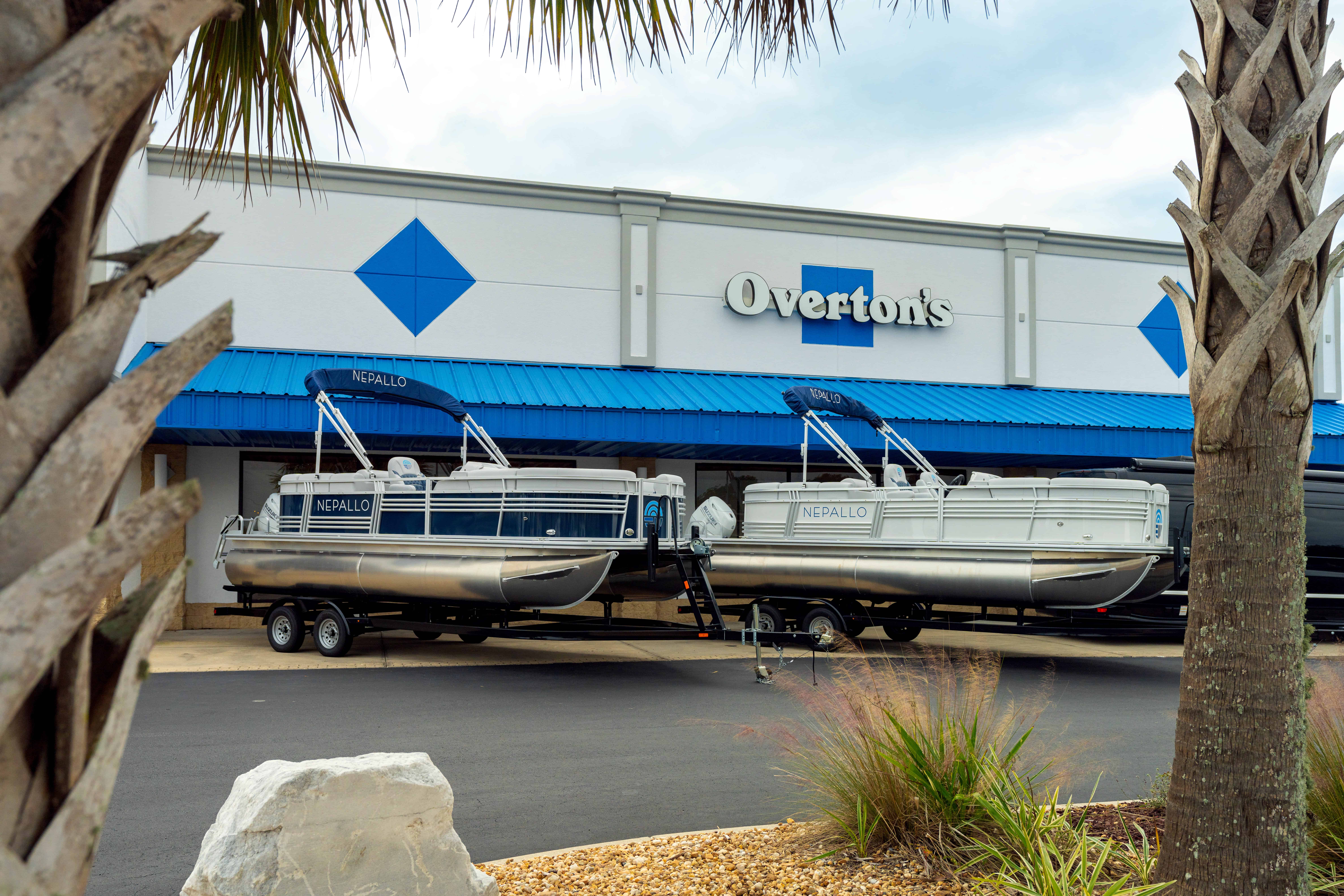
Once you have found the vehicle’s capacity, you need to know how much you’re towing, i.e. the weight of your fully loaded boat and trailer. Your owner’s manuals can tell you how much the trailer and boat weigh and how much they can hold, but what they can’t tell you is how much both weigh when you have all your stuff loaded onto them. Therefore, it’s important for you to weigh the boat and trailer yourself before you’re ready to take it to the water. It’s easy to do this, just find a local commercial truck scale off the highway. This will give you the exact amount you need to account for. The weight of the fully loaded boat and trailer cannot exceed the towing capacity of the vehicle.
Parts Needed
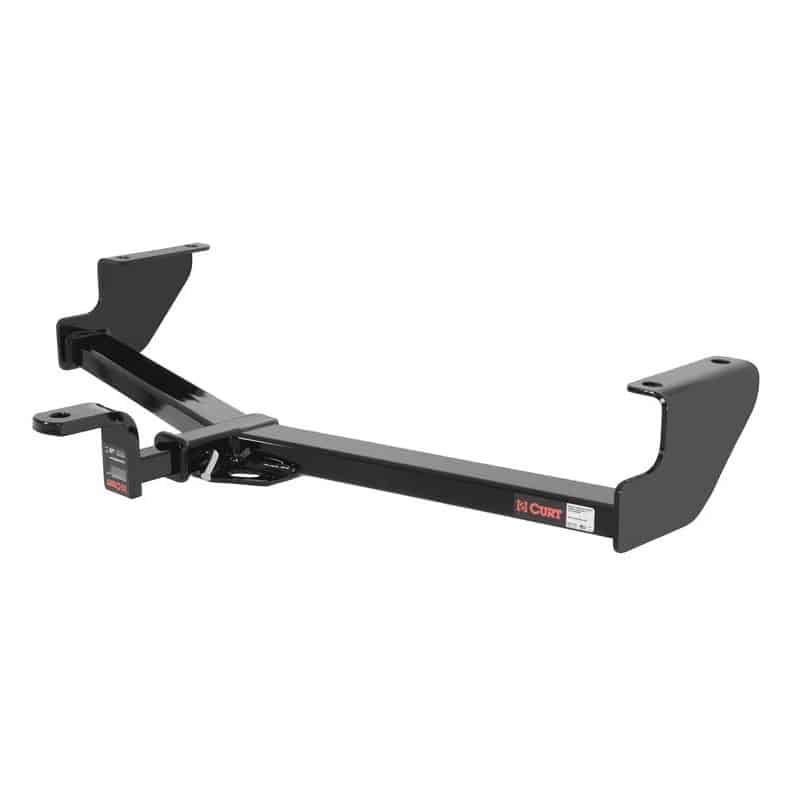
Trailer Hitch Receiver – The trailer hitch receiver is bolted to the vehicle’s frame. It provides an opening, usually 1-1/4” or 2”, that’s used for installing a towing accessory such as a ball mount.
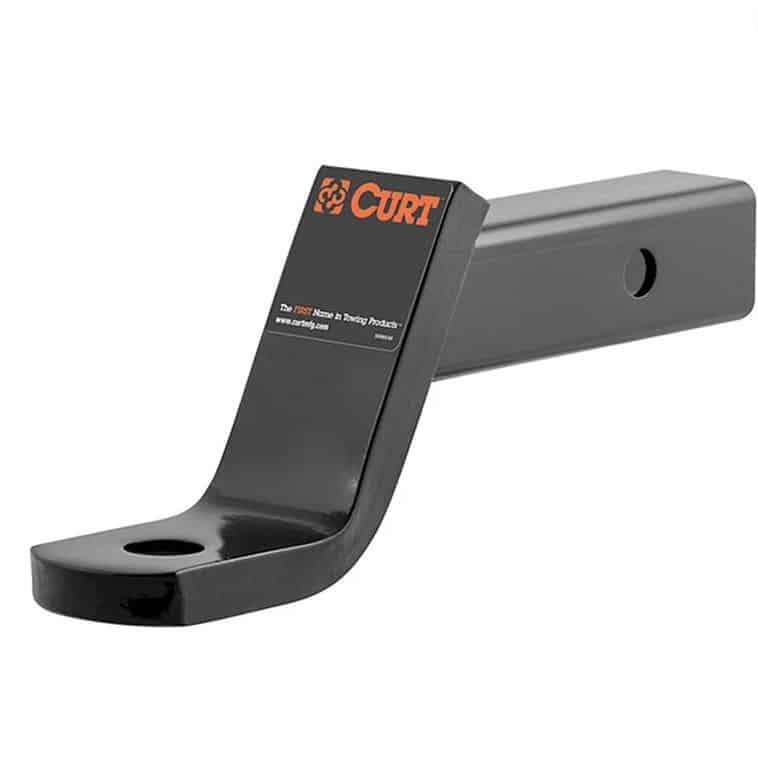
Ball Mount – The ball mount installs into the trailer hitch receiver and provides a place for the hitch ball to be mounted which then attaches to the coupler on the trailer. The common hitch ball sizes are 1-7/8”, 2”, and 2-5/16”. The ball mounts are also offered in various rises and drops to match your vehicle to the trailer’s height.
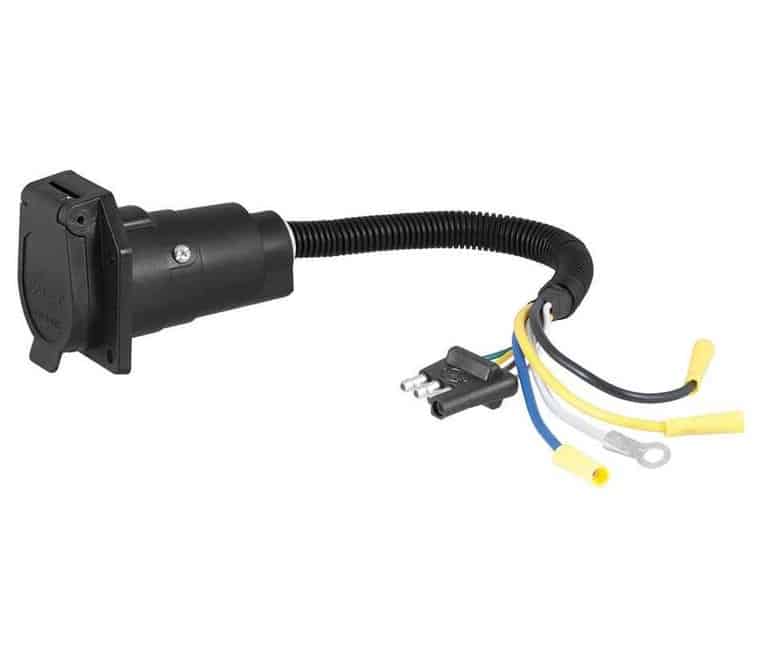
Trailer Wiring Harness – The wiring harness is what transfers the signals from the vehicle to the lights on the trailer. The most common types of connectors for boat trailers are 4-way flat, 5-way flat, and 7-way round. If the trailer has brakes, then you’ll be looking at one of the latter options – a 5-way flat for surge brakes or a 7-way round for electric brakes. The connector should already be installed on the trailer; you just need to install a harness on the vehicle that matches what is on the trailer.
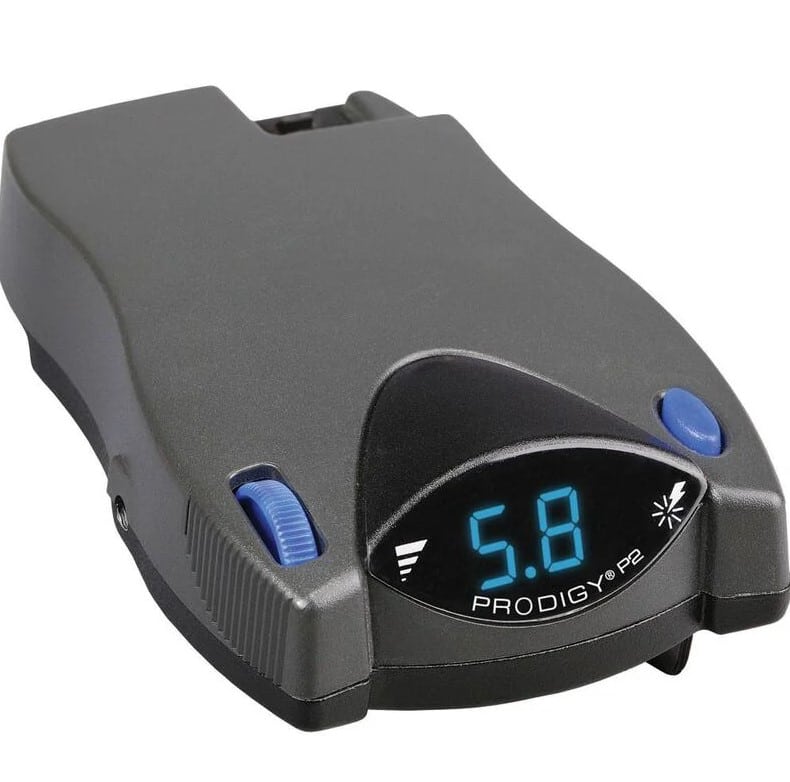
Trailer Brake Controller – This won’t be required for every trailer, but if the trailer has brakes, you might need one depending on what type of brakes the trailer has. For most older boat trailers, if they had any brakes on them, they were surge brakes like you would find on a vehicle. However, a lot of new boat trailers now come with electric trailer brakes from the factory, and if this is what you have, you’ll need an electric trailer brake controller to operate them.
Towing a Boat Trailer
Now that you know your vehicle can pull the boat/trailer and you have everything you need to do so, you can start hooking everything up.
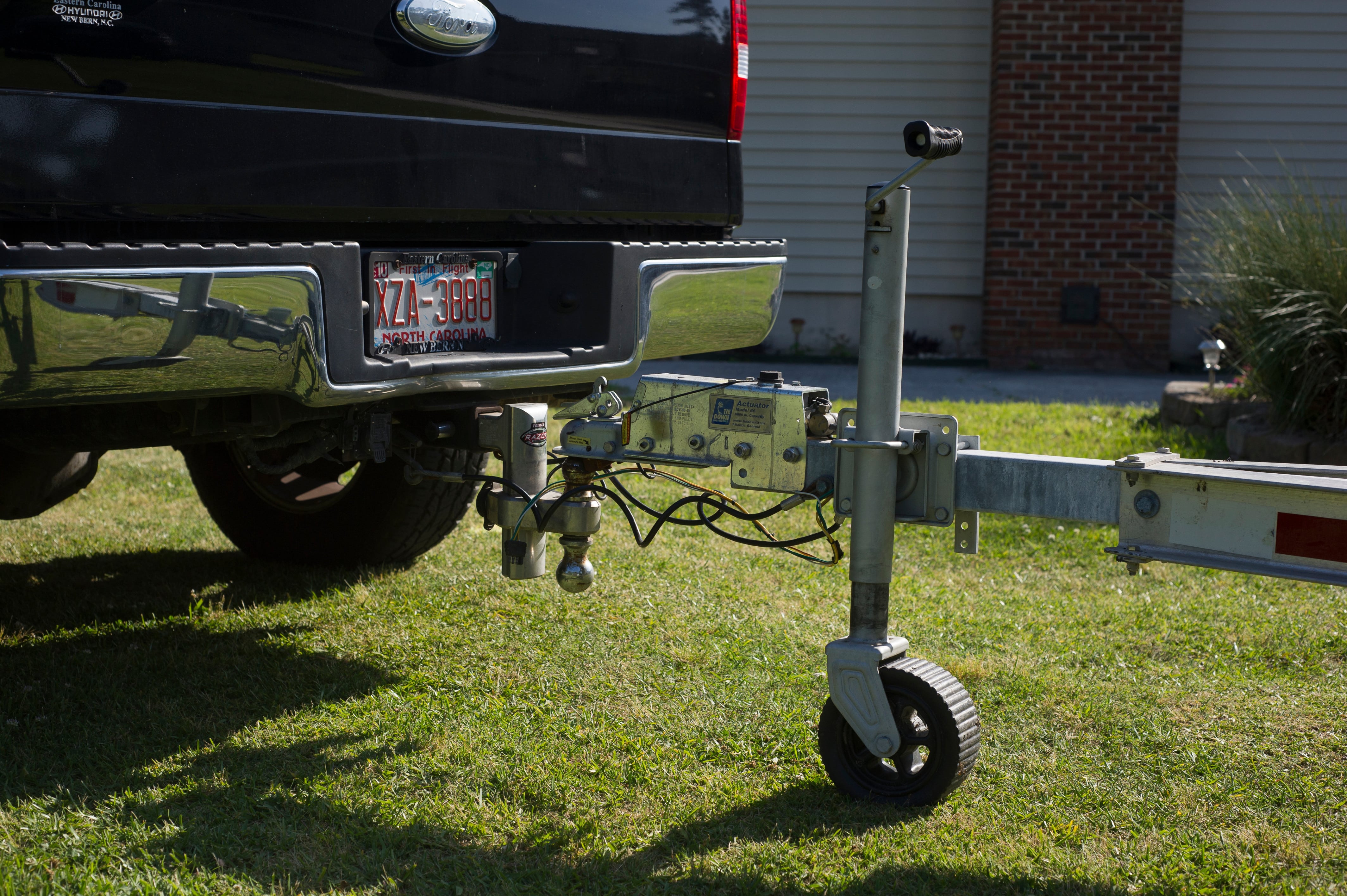
Step 1: Attach the Coupler to the Hitch Ball
A backup camera will do wonders for this step, but if you don’t have one, you can still do this yourself. You may be getting in and out of your truck a lot the first few times, especially if you don’t have a spotter. First, make sure the trailer wheels are chocked. Then align the center of the coupler to the center of the hitch ball on the ball mount and back the vehicle toward the trailer until the ball is under the coupler. For this to be successful, the coupler needs to be raised higher than the hitch ball. You’re likely going to overshoot or undershoot several times before you get it right and that’s okay. Once you do get it lined up, lower the coupler onto the ball via the tongue jack (make sure the coupler latch is open) until the jack is no longer touching the ground. You’ll then need to close the latch on the coupler to lock it on the hitch ball.
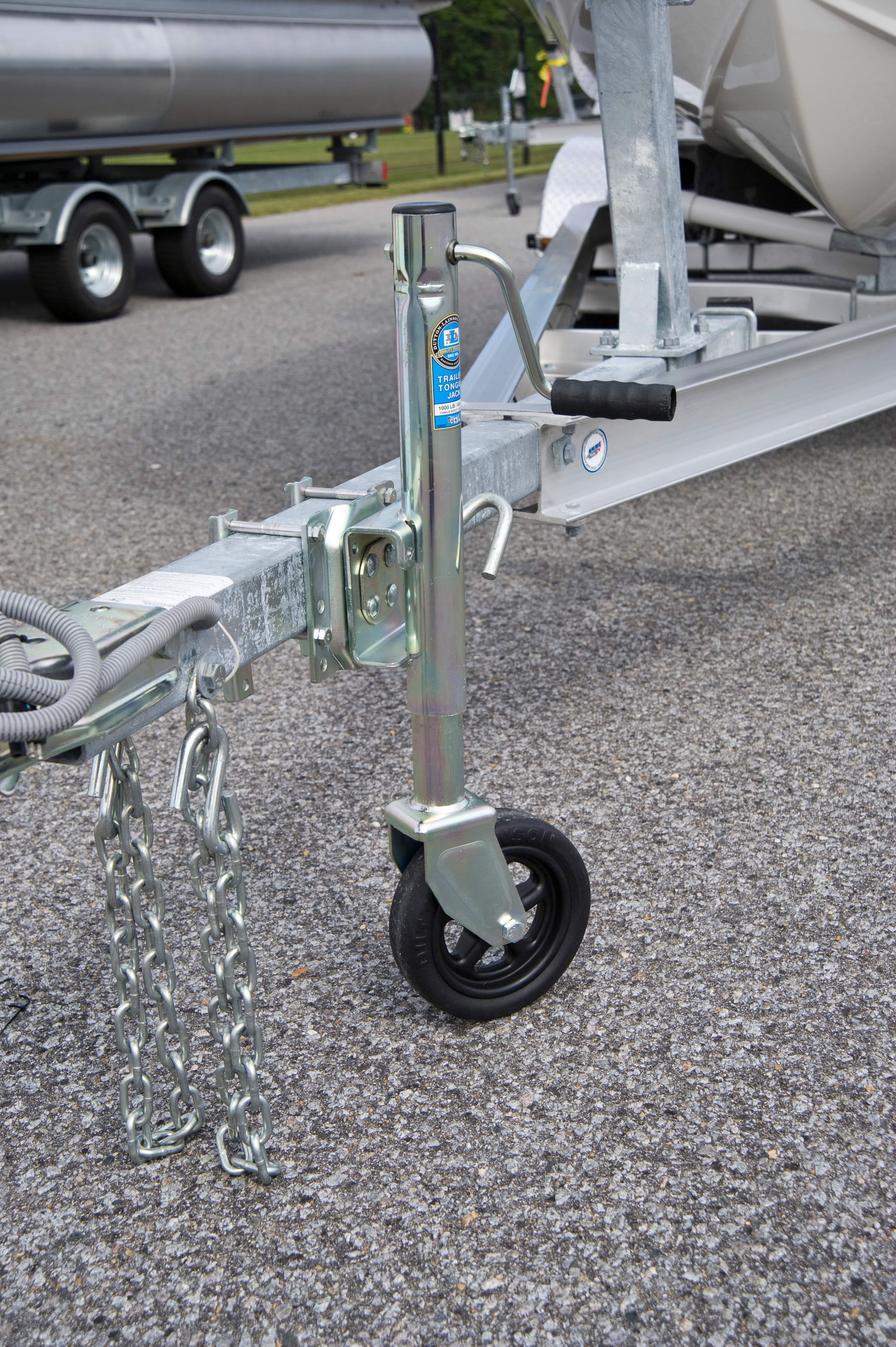
Step 2: Attach Safety Chains
There should be two separate chains attached to the trailer and two safety chain loops on the vehicle hitch receiver. You’ll need to cross the chains at least once or until they don’t drag the pavement and then attach them to the safety chain loops on the hitch receiver. The hooks are usually either s-shaped or clevis style.
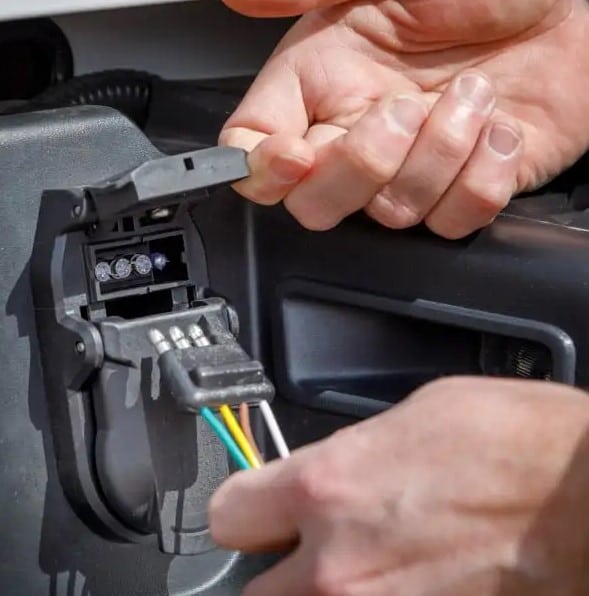
Step 3: Hook Up the Trailer Connector
Take the trailer connector from the trailer and plug it into the trailer connector on the vehicle. Make sure the connector is fully seated and that you aren’t tangled up in any of the safety chains.
Step 4: Breakaway Switch
If the trailer has brakes, you’ll need to hook up a breakaway switch from the trailer to the vehicle, usually to the safety chain loops on the hitch receiver. This switch will engage the brakes on the trailer should it become detached from the tow vehicle.
Step 5: Double-Check
This is a very important step that is often overlooked. Once you get everything hooked up, you need to go back over each step and make sure everything is correct. This is also a good time to check all your tires and have a spotter make sure your trailer lights are working.
Launching at the Boat Ramp
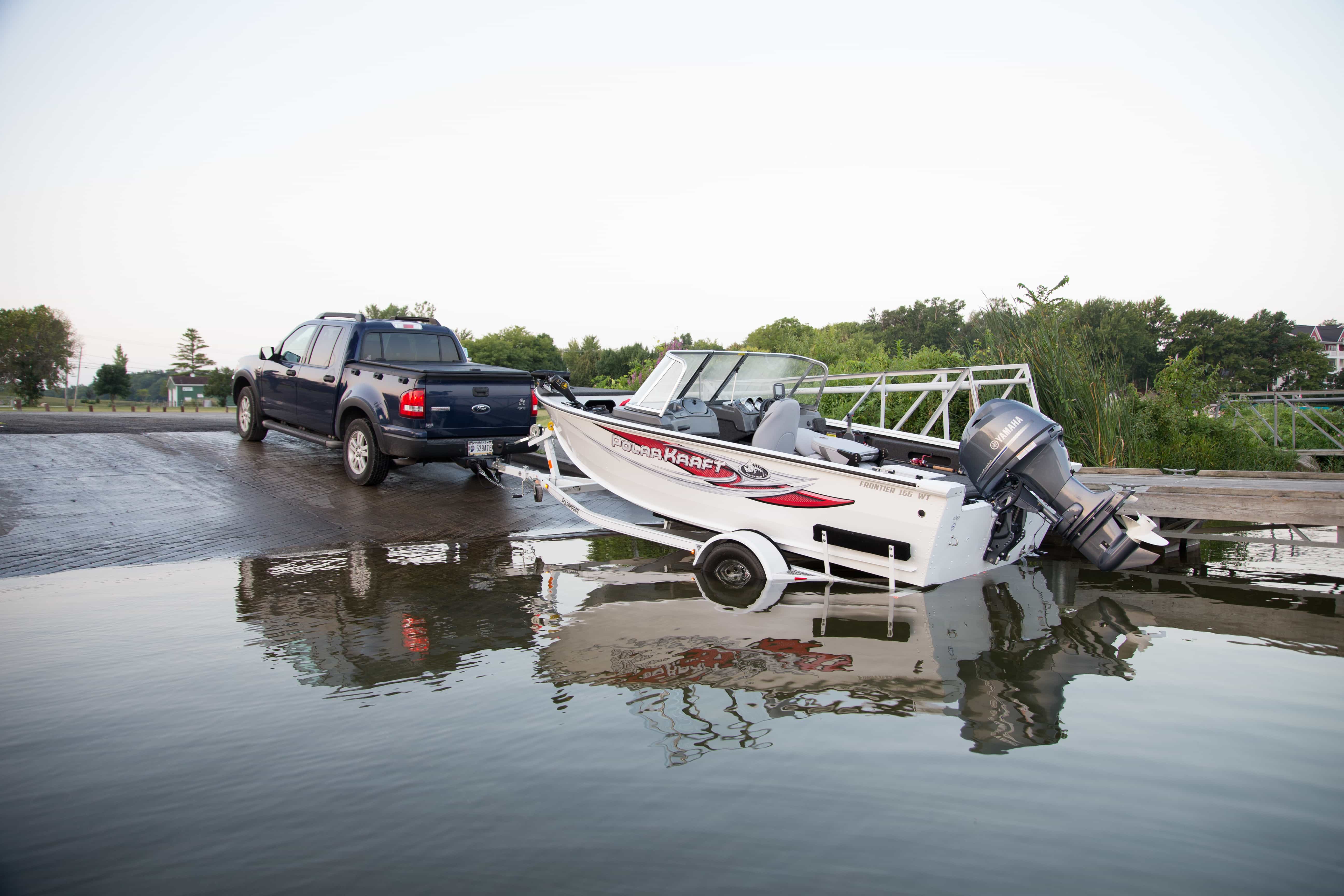
Now that you’ve arrived at the boat ramp, it’s time to put your new boat in the water. It’s a good idea to park in the lot above the ramp first and walk down to check everything out beforehand. It also might be good to let others go before you if this is your first time launching and the ramp is busy. One of the worst things for a first-timer is peer pressure from others watching. You should also keep some cash on you when you head to the ramp as many places will charge you a few bucks to launch. Before you head down the ramp, unplug the trailer connector, undo your transom straps, loosen your winch strap, and don’t forget to make sure the plug is in your boat.
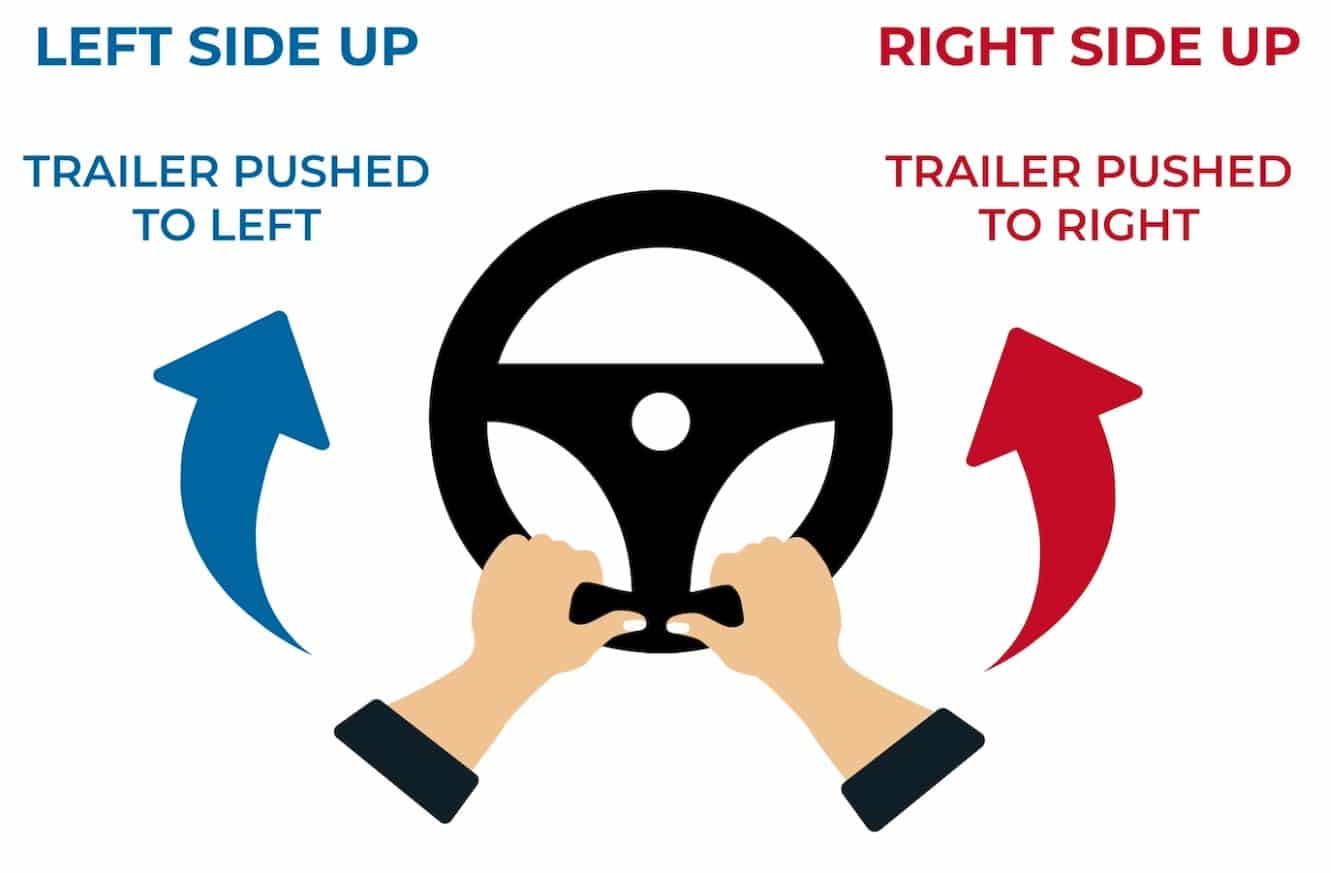
If you have not backed up a trailer before, this may be tricky. If you have, you might find this easier as you can generally see a lot more behind you trailering a boat instead of a camper. To begin, pull up to the ramp and turn so that your boat and vehicle are aligned in the center of the road leading to the ramp, facing away from the water. Then slowly begin to back onto the ramp and into the water. As you back down the ramp you will likely need to make corrections left and right to stay centered. This is where it gets tricky as the trailer is going to swing out in the opposite direction of the wheel. To help with this, place your hands at the bottom of the wheel as you see in the diagram above. This allows the boat to swing in the same direction as the hands move. If the boat and vehicle get too far out of line, you can simply pull forward and retry.
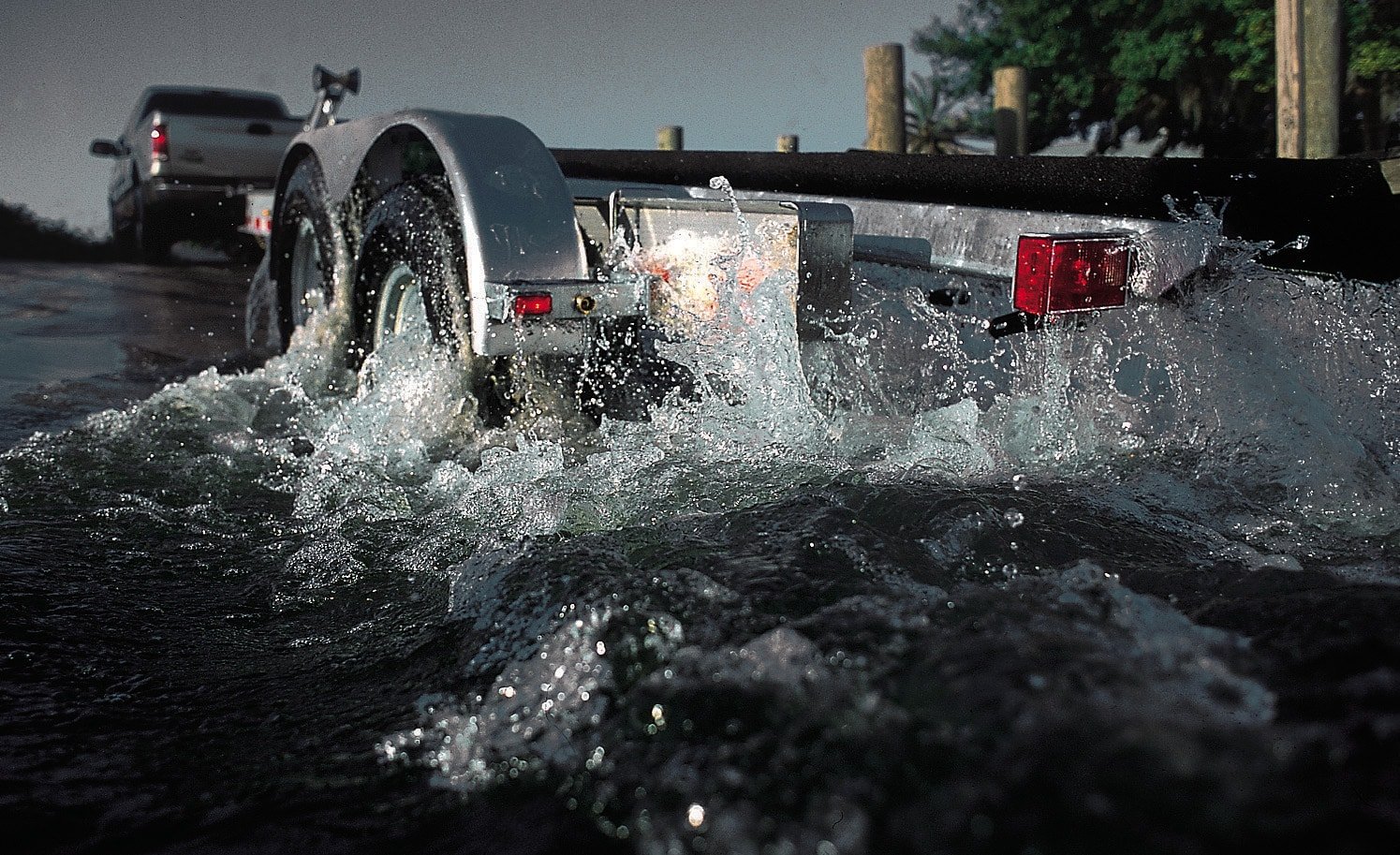
Once you are in the water, you’ll back the trailer up until about 2/3 of the bunks are underwater. As a rule, you don’t want the vehicle’s rear tires in the water, but this is not always possible. If you have a helper, have them undo the winch strap, and the boat should float away or you may need to start the boat and reverse off the trailer. If you don’t have a helper, you’ll need to get out of the truck (make sure the parking brake is set) and do this job yourself. If there’s too much tension on the winch strap, you can loosen this before unhooking.
All that’s left is to drive your vehicle back up to the parking lot, then come back down and get in your boat.
Loading at the Boat Ramp
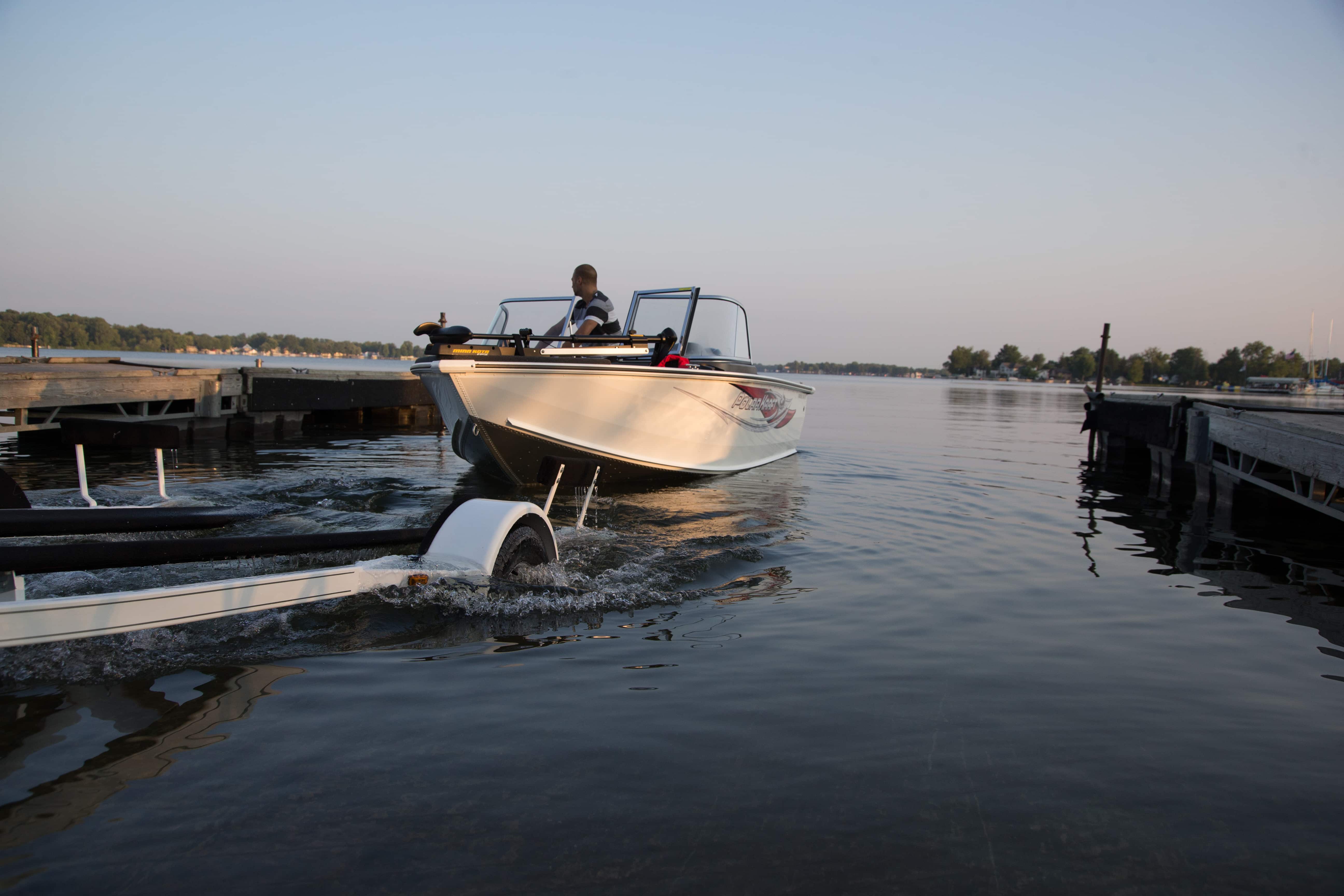
It’s equally as tricky to load your boat on the trailer as it is to launch your boat. The biggest mistake at the boat ramp when retrieving your boat is backing the trailer too far into the water. This causes your boat to float and not sit on the trailer correctly, so when you go to pull out, it’s not centered. To prevent this, back the trailer into the water most of the way at first to wet your bunks, then drive forward a bit until about 2/3 of your bunks are underwater, just like when you launched the boat. Once done, idle the boat onto the trailer as slowly and steady as you can. Ideally, your bow will be flush with the bow stop and centered, but you may need to use your winch to pull the boat up to this point. If it’s not centered, you’ll need to back your boat off the trailer and try again. If you consistently have trouble centering the boat on the trailer, you can add guide-on posts and self-centering rollers to help with this in the future.
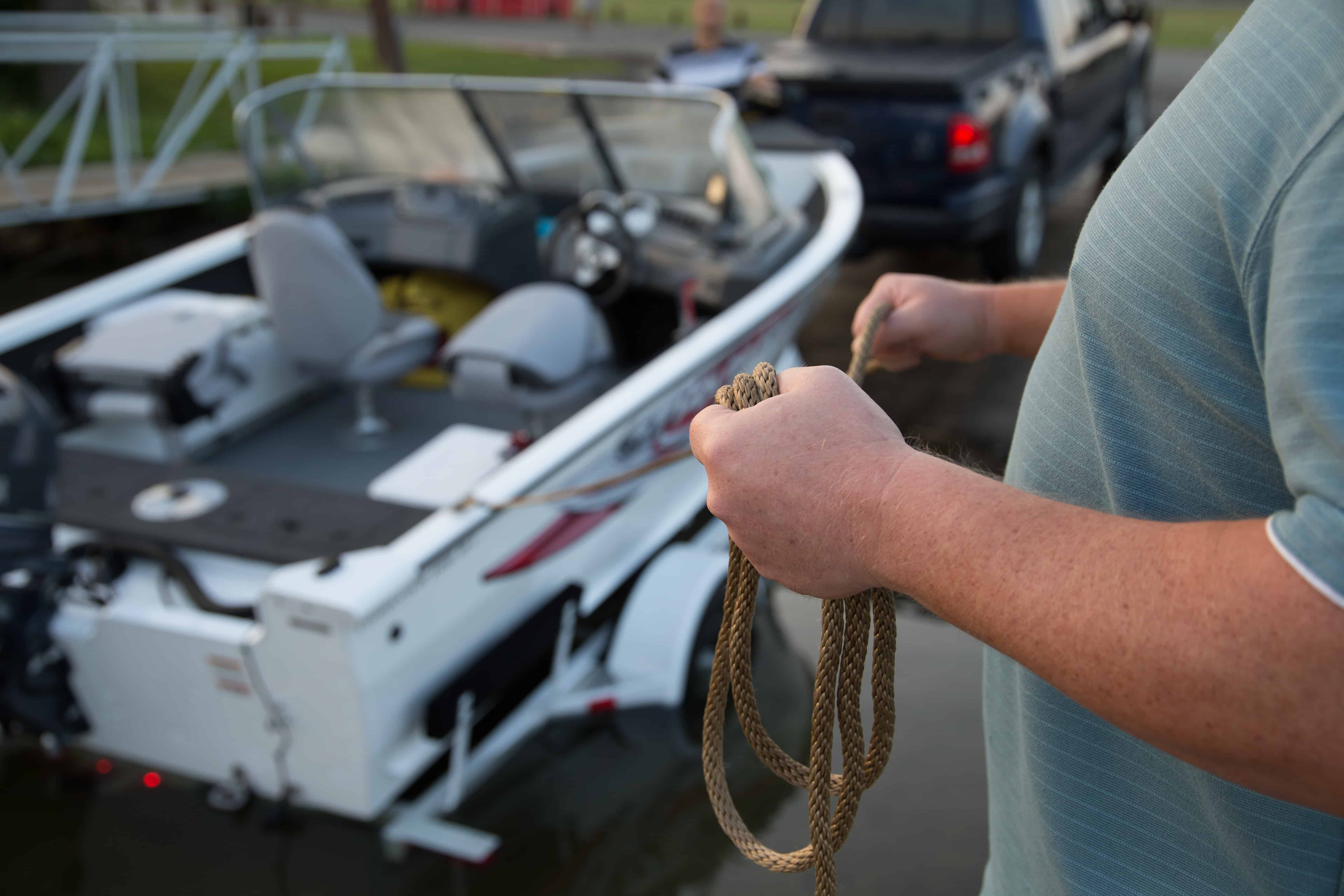
Once your boat is on the trailer and the bow is secure, drive up to the parking lot and finish securing your boat by attaching the transom tie-downs. It’s also recommended that you hose off the boat as soon as possible and remove the drain plug to let any water out. Plug the electrical connector back in, do one last check, and you’re ready to head back home.
Feel free to drop any comments you have below if you do things differently and want to share your experience towing a boat trailer.

